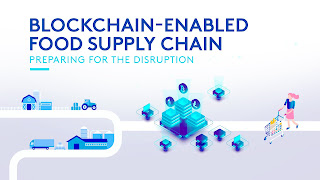Blockchain technology has been used in the finance sector for more than ten years, most notably in cryptocurrencies. But blockchain is not just for the financial sector; interest in its use in other sectors is growing. Blockchain in consumer goods has the ability to change how products are sold, tracked, and authenticated. In this article, we examine how blockchain is affecting consumer goods and showcase some innovative blockchain product concepts.
Numerous cryptocurrency product concepts have the potential to revolutionize the consumer goods sector. One of these concepts is the use of blockchain-based smart contracts, which could automate payments between partners in a supply chain and cut down on transaction time and cost. Another suggestion is to use blockchain-based loyalty programs, which could provide customers with more freedom and transparency in terms of earning and redeeming rewards.
Blockchain adoption has the potential to have a significant effect on the consumer goods sector, increasing transparency, efficiency, and industry confidence. We can anticipate more blockchain product ideas that could revolutionize the way we purchase and sell goods as the technology behind them develops.
Role of Blockchain in Consumer Market products
Consumer items use blockchain technology. For apps that need transparency, traceability, and immutability, it stores data securely and decentralized. Blockchain consumer items use cases:
Supply Chain Management: Blockchain can trace goods from manufacturer to consumer. This improves supply chain openness and reduces fraud and counterfeiting. Blockchain can trace raw materials, manufacturing, shipping, and delivery.
Product authenticity: Consumer goods manufacturers lose money and customers are at risk from counterfeiting. Blockchain's tamper-proof history can prove product authenticity. This helps customers spot fakes.
Consumer Loyalty Programs: Blockchain-based consumer loyalty schemes are secure and transparent. Consumers can cash blockchain-stored loyalty points for rewards. Users can see their points total, rewards, and transactions.
Payment and Financial Transactions: Blockchain can secure and speed up consumer-retailer payments. Blockchain eliminates intermediaries, lowering transaction costs, improving payment security, and speeding payment handling.
Recycling and Waste Management: Blockchain can boost recycling and trash management. Blockchain can trace consumer goods disposal and recycling. Recycling earns tokens for savings on new purchases.
Product Reviews and Ratings: Blockchain can secure and open product reviews and ratings. Blockchains can keep consumer ratings and reviews. Users can see reviews and scores.
Food Safety: Blockchain's transparent and tamper-proof record of food products' farm-to-table journey can enhance food safety. Consumers can see the food's origin, growing conditions, and trip to their table.
Conclusion
In conclusion, blockchain technology has the ability to change the markets for consumer goods by making supply chain management more transparent, traceable, and efficient. It can also give people more power by giving them more control over their purchases and info. As the technology keeps getting better and more people use it, it will probably change how we use goods and services.

Comments
Post a Comment